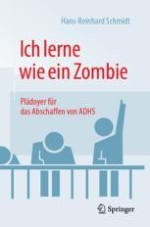2019 | OriginalPaper | Buchkapitel
17. Wie wirkt „Ritalin“?
verfasst von : Hans-Reinhard Schmidt
Erschienen in: Ich lerne wie ein Zombie
Verlag: Springer Fachmedien Wiesbaden
Aktivieren Sie unsere intelligente Suche, um passende Fachinhalte oder Patente zu finden.
Wählen Sie Textabschnitte aus um mit Künstlicher Intelligenz passenden Patente zu finden. powered by
Markieren Sie Textabschnitte, um KI-gestützt weitere passende Inhalte zu finden. powered by
